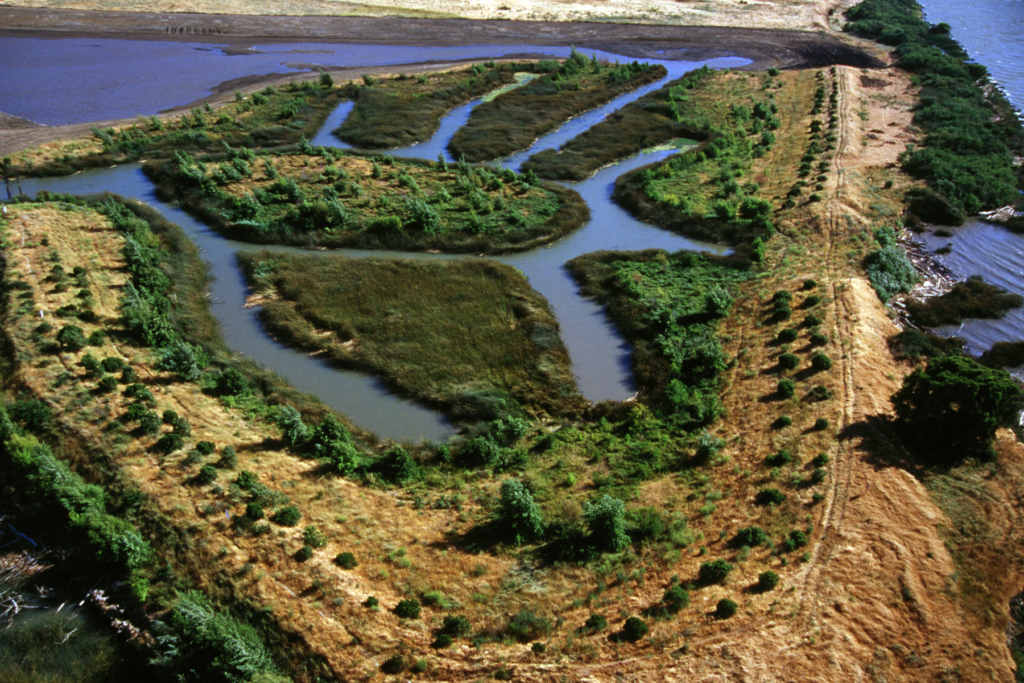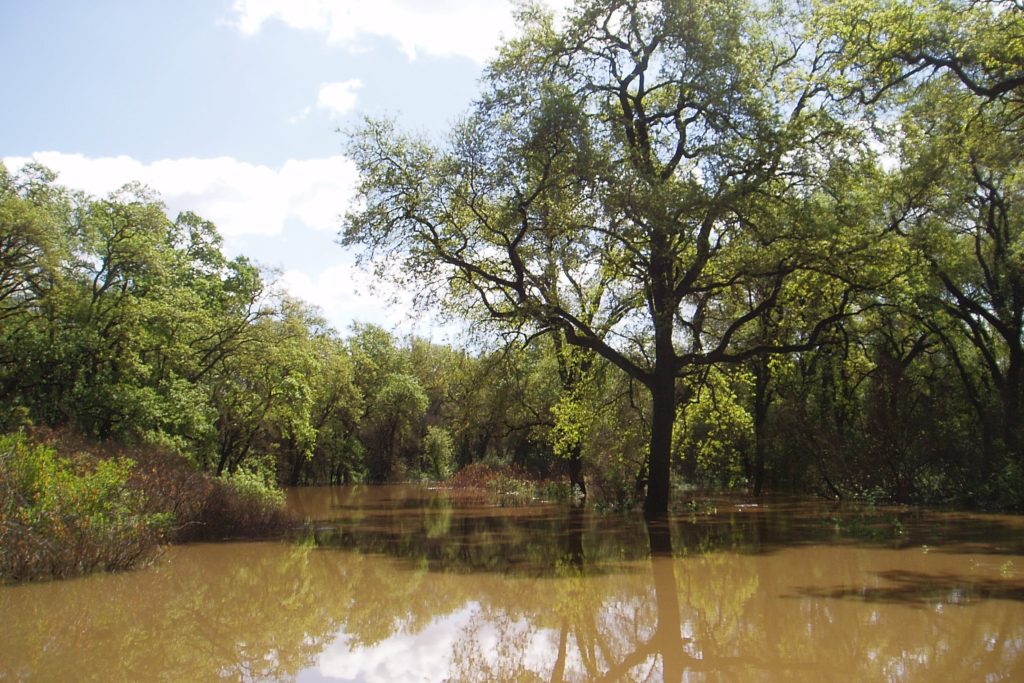Restore floodplains and estuaries
Young salmon and steelhead need floodplains and estuaries during their migration to the ocean. Their time in these stretches of the river is when they acclimate to saltwater and find the abundant food supplies they need to grow big enough to survive in the ocean. Healthy estuaries are also where they find the habitat and underwater structure to hide from predators. Adult salmon also depend on estuaries for the same reasons, returning to them during their migration upstream to fuel up and hide from predators that are waiting for them. Unfortunately, these days, healthy estuaries are few and far between.
 Levees and islands in the Sacramento River delta; there are an estimated 1,100 miles of levees © U.S. Bureau of Reclamation
Levees and islands in the Sacramento River delta; there are an estimated 1,100 miles of levees © U.S. Bureau of Reclamation
The Problem
The legacy of past land uses — like logging, road-building and coastal development — has altered most of California’s coastal estuaries. Now they often don’t provide what the young and adult salmon need on their perilous journeys. Logging and road building have led to erosion and silted up many estuaries. Urbanization and farming have changed water flows, and runoff is polluting most estuaries. These activities have also narrowed floodplains, eliminating the river-side forests that provide shade, important habitat structure and food.
 Flooded oaks on the Cosumnes River floodplains © Carson Jeffres
Flooded oaks on the Cosumnes River floodplains © Carson Jeffres
The Solution
Restore the habitat structure, water flows, and connectivity to critical estuaries and floodplains
Restoring estuaries includes removing dikes and reconnecting floodplains, planting streamside vegetation and introducing underwater cover by adding trees and logs. Where there is cattle grazing, fencing off wide buffers around streams can dramatically improve habitat and water quality, giving salmon and steelhead what they need at critical stages of their lives.
Examples
Resources
Check out The Nature Conservancy’s Conservation Assessment of U.S. West Coast Estuaries to learn more about the legacy of past land uses that has altered many California coastal estuaries, as well as the progress that has been made to restore them.
Visit the U.S. Fish & Wildlife’s literature review on the Importance of Estuarine Habitats to Anadraomous Salmonids of the Pacific Northwest to learn more about the importance of estuary habitat to salmon.







